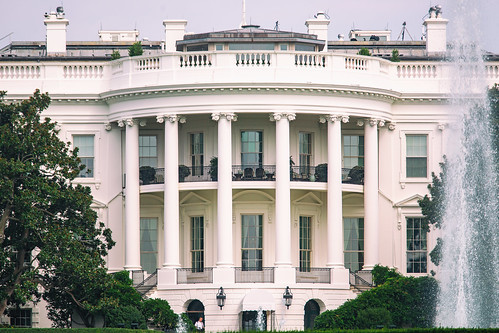Among its many provisions, the Canadian Environmental Protection Act (CEPA) creates several lists of “toxic substances,” and empowers Environment and Climate Change Canada (ECCC) to revise the list. In 2021, ECCC add “plastic manufactured items (PMI)” to one of these lists, but was sued by manufacturers seeking to void the addition. Extensive CEPA amendments were enacted in April 2023 (“Strengthening Environmental Protection for a Healthier Canada Act” (Bill S-5)), including revisions to the toxic substance lists – including recodification of the listing of PMI – and left ECCC’s authority over toxic substances relatively unchanged, so the litigation continued. In November 2023, the Federal Court ruled that the CEPA amendments did not moot the issues in the litigation, and ruled that ECCC had exceeded its statutory and constitutional authority when listing PMI.
Read MoreAudit, Compliance and Risk Blog
Canada: Federal Court rejects listing of Plastic Manufactured Items as “Toxic Substances” under Canadian Environmental Protection Act
Posted by Jon Elliott on Mon, Feb 19, 2024
Tags: Environmental risks, Environmental, Greenhouse Gas, climate change, Environment, Environmental Policy, Climate, ECCC, CEPA
Huge Clean Air Act settlement against truck emission cheater
Posted by Jon Elliott on Tue, Feb 13, 2024
On January 10, 2024, the U.S. Environmental Protection Agency (EPA), U.S. Department of Justice, and the California Air Resources Board (ARB) filed a settlement agreement with Cummins, Inc. covering nearly one million Ram vehicles for which Cummins supplied diesel engines with illegal software-based “defeat devices” that produced misleading emission certification results compared with significantly higher emissions while the vehicles are in actual use. Cummins will pay the largest CAA penalties ever ($1,675 million in federal and state penalties), will fund environmental mitigation projects to compensate for excess nitrogen oxides (NOx) emissions ($175 million), and will also recall 630,000 vehicles (model years 2013-2019) to remove the defeat devices (estimated costs $150 million, including warranty extensions). Cummins will also implement corporate governance, organizational, and technical process reforms to minimize the likelihood of future violations.
Read MoreTags: Environmental risks, Environmental, EPA, clean air, Environment, Clean Air Act, Environmental Policy
EPA releases data from latest mandatory greenhouse gas emission reports
Posted by Jon Elliott on Fri, Nov 18, 2022
For over a decade, the US Environmental Protection Agency (EPA) has required thousands of facilities and organizations to report annual emissions of greenhouse gases (GHGs) (40 CFR part 98). The most recent reports were due in April 2022, covering 2021 emissions from more than 8,000 entities (I summarized these requirements HERE https://blog.stpub.com/mandatory-ghg-epa-reports-due-april-1-2022). EPA has now published summary compilations of these data, showing an overall 4% increase in emissions compared with 2020. EPA attributes the increases to economic expansion coming out of the COVID-induced downturn, and reminds readers that reported emissions are generally lower than in those first reported for 2010-2011.
Read MoreTags: Environmental risks, Environmental, Greenhouse Gas, CO2 Emissions, Environmental Policy
The US had been a major player in the drafting and enactment of the Kigali Amendment (during President Obama’s administration), but then withdrew its support (during President Trump’s administration). However, the US enacted Kigali-like requirements in the December 2020 coronavirus relief bill (American Innovation and Manufacturing Act of 2020 (AIM Act)), among the many provisions buried within its 5,593 pages; EPA finalized its rules in September 2021 (I wrote about these rules here).
The remainder of this note summarizes the situation.
Why are HFCs being phased down, and how?
HFCs were developed primarily as substitutes for chlorofluorocarbons (CFCs), which are the principal ozone depleting substances (ODSs) targeted by the Montreal Protocol. HFCs have lower but non-zero ozone depleting potential, and are greenhouse gases that contribute to climate change. Accordingly, nearly 30 years after the initial 1987 approval of the Montreal Protocol roughly 200 national and international parties negotiated HFC phase-downs. As adopted in Kigali, Rwanda these amendments divide countries into three groups with different schedules and targets:- developed nations including the United States – cut consumption to 90% of 2011-2013 baseline of most HFCs (plus 15% of those already covered by the Protocol) by 2019, declining to 15% by 2036
- most developing nations, including China and over 100 others - consumption to peak in 2024 at 100% of 2011-2013 baseline of most HFCs (plus 25% of those already covered by the Protocol), declining to 20% by 2045
- 10 hot-climate developing countries (where air conditioning is particularly important), including India, Pakistan and some Gulf states - consumption to peak in 2028 at 100% of 2011-2013 baseline of most HFCs (plus 25% of those already covered by the Protocol), declining to 15% by 2047
After the Trump administration replaced the Obama administration, the US took no action on this agreement. During this period, however, other countries have moved forward to ratify and work to meet their commitments.
What HFC-related provisions did the AIM Act enact?
The massive coronavirus relief bill includes Division S (“Innovation for the Environment”), with section 103 (“American Innovation and Manufacturing Act of 2020”). Without mentioning the Kigali Amendment, section 103 incorporates its requirements into US law:- the legislation lists 18 specific HFCs, and authorizes EPA to designate additional formulations
- EPA was to calculate 2011-2013 production and consumption baselines for each, and to use these to calculate future phase-down levels ranging from 90% in 2020 to 15% in 2036 and thereafter
- EPA was to issue regulations with 270 days (by 9/23/21) to set phase-down requirements, with associated procedural requirements including allowances associated with each baseline amount, and reclamation and destruction methods
EPA’s rules are designed to meet these requirements. In addition, EPA has initiated or re-invigorated other programs to support the phase-down of HFCs and their replacement by refrigerants that are less harmful to global climate and the stratospheric ozone layer.
What now?
Ratification will become official once the US submits formal notification to the United Nations. The new rules took effect on November 4, 2021 and are progressing; EPA proposed 2024-reduction formulas on October 20, 2022.. While domestic requirements will not change from those enacted through the AIM Act, ratification returns the US to the center of international HFC-reduction efforts, and reinforces national commitments to the environment.IImplementation Checklist
- Does the organization manufacture, import or use any ozone depleting substance (ODS) subject to the Montreal Protocol and/or CAA Title VI?
- If the phase-out date for any ODS has passed, do any of the organization’s activities qualify with applicable exceptions or essential uses?
- Does the organization manufacture, import or use any HFCs?
- Has the organization reviewed any such activity to identify alternatives for any HFC that is or may become subject to phase-down under US and international law?
Where do I go for more information?
Information available via the Internet includes:
● US legislation
Tags: Environmental risks, Greenhouse Gas, climate change, Environment, HFCs, Ozone Layer, Environmental Policy, Climate
Environmental Protection Agency issues administrative inspection rules
Posted by Jon Elliott on Wed, Jun 03, 2020
Effective March 2, 2020, the Environmental Protection Agency (EPA) has issued rules governing the agency’s administrative civil inspection procedures (40 CFR s. 31.1). These new rules meet a requirement created by President Trump’s Executive Order (EO) 13892 (“Promoting the Rule of Law Through Transparency and Fairness in Civil Administrative Enforcement and Adjudication”), issued October 9, 2019 (I wrote about this EO HERE). The new rules apply to on-site civil inspections conducted by EPA personnel, and to federally credentialled contractors and Senior Environmental Employment (SEE) employees conducting inspections on EPA’s behalf; they do not apply to criminal investigations, nor to state and state-credentialled inspections.
Read MoreTags: Business & Legal, Environmental risks, Environmental, EPA, clean water, clean air
Department of Justice Restricts Supplemental Environmental Project Agreements
Posted by Jon Elliott on Wed, May 20, 2020
Effective March 12, 2020, the US Department of Justice (DOJ) prohibits its US attorneys from entering into settlements in which DOJ lowers penalties for defendants that agree to conduct “supplemental environmental projects (SEPs)”, if the SEP involves payments to a third party. This action is the latest in a series of DOJ moves against SEPs since President Trump took office. The first such step was a June 2017 DOJ management memorandum directing US attorneys NOT to agree to SEPs that include payments to third parties (I wrote about that memo HERE). The second was an August 2019 memorandum restricting use of SEPs in Clean Water Act (CWA) cases against state and local governments, in which DOJ rejected arguments that recent legislation allows them (I wrote about that memo HERE).
Read MoreTags: Business & Legal, Environmental risks, Environmental, EPA, clean water, clean air, DOJ, SEP, CWA, Environmental Projects
The 2016 Amendments to the Toxic Substances Control Act (TSCA; the “Frank R. Lautenberg Chemical Safety for the 21st Century Act”) assigned the Environmental Protection Agency (EPA) a variety of new responsibilities and powers to review and regulate chemicals in commerce in the United States. These changes include additional requirements to review chemicals already in use (I summarized this piece of the new TSCA here). Despite all the changes to EPA priorities since 2016 (i.e., during the Trump Administration), EPA has marched forward with these chemical reviews. These reviews include formal statutory requirements to identify separate lists of 20 “high priority” – i.e., potentially high risk – chemicals for accelerated reviews, and 20 “low priority” chemicals EPA considers not to need further review. I wrote about EPA’s 2019 proposals for these lists here.
Read MoreTags: Environmental risks, Environmental, EPA, Hazcom, tsca
EPA and the Corps of Engineers Finish Redefining “Waters of the United States”
Posted by Jon Elliott on Wed, Mar 18, 2020
On January 23, 2020 the Environmental Protection Agency (EPA) and the U.S. Army Corps of Engineers (Corps) finalized revisions to narrow their joint regulatory definitions of “waters of the United States”, applying authority under the Clean Water Act (CWA). The agencies characterize this narrowing as an increase in certainty for stakeholders, accomplished by eliminating some of the site-specific discretion that the 2015 rules provided to permit writers.
This marks the latest step in a cycle of rulemakings that began during the Obama administration in 2015, when the same agencies adopted revisions to the same rules expanding their definitions in order to interpret and apply then-recent decisions by the US Supreme Court.
Read MoreTags: Business & Legal, Environmental risks, Environmental, EPA, clean water
Trump Administration Proposes to “Modernize” Federal Environmental Impact Assessments by Narrowing Them
Posted by Jon Elliott on Tue, Feb 25, 2020
The federal Council on Environmental Quality (CEQ) has proposed to revise its regulations administering the National Environmental Policy Act (NEPA) of 1969. NEPA requires federal agencies to assess the environmental effects of their proposed actions, and incorporate this information into their decisions. Government-wide guidance is provided by the White House’s CEQ, established by NEPA and appointed by the President. CEQ issues formal regulations that agencies must follow, and guidance documents that provide additional advice. CEQ also reviews agencies’ NEPA implementation programs, and publishes annual national Environmental Quality Reports.
Read MoreTags: Business & Legal, Environmental risks, Environmental, EHS, EPA, clean water, site auditing, greenhouse
On February 10, the Trump Administration issued its budget proposal for federal Fiscal Year (FY) 2021 (October 1, 2020 through September 30, 2021), entitled “A Budget for America’s Future.” The drastic changes in budgeting for environmental health and safety (EH&S) regulation are consistent with previous proposals from this administration. They have no chance of adoption, particularly given the Democrats’ control of the House of Representatives, but still represent a fair summary of the President’s continuing priorities.
Read MoreTags: Business & Legal, Environmental risks, Environmental, EPA










